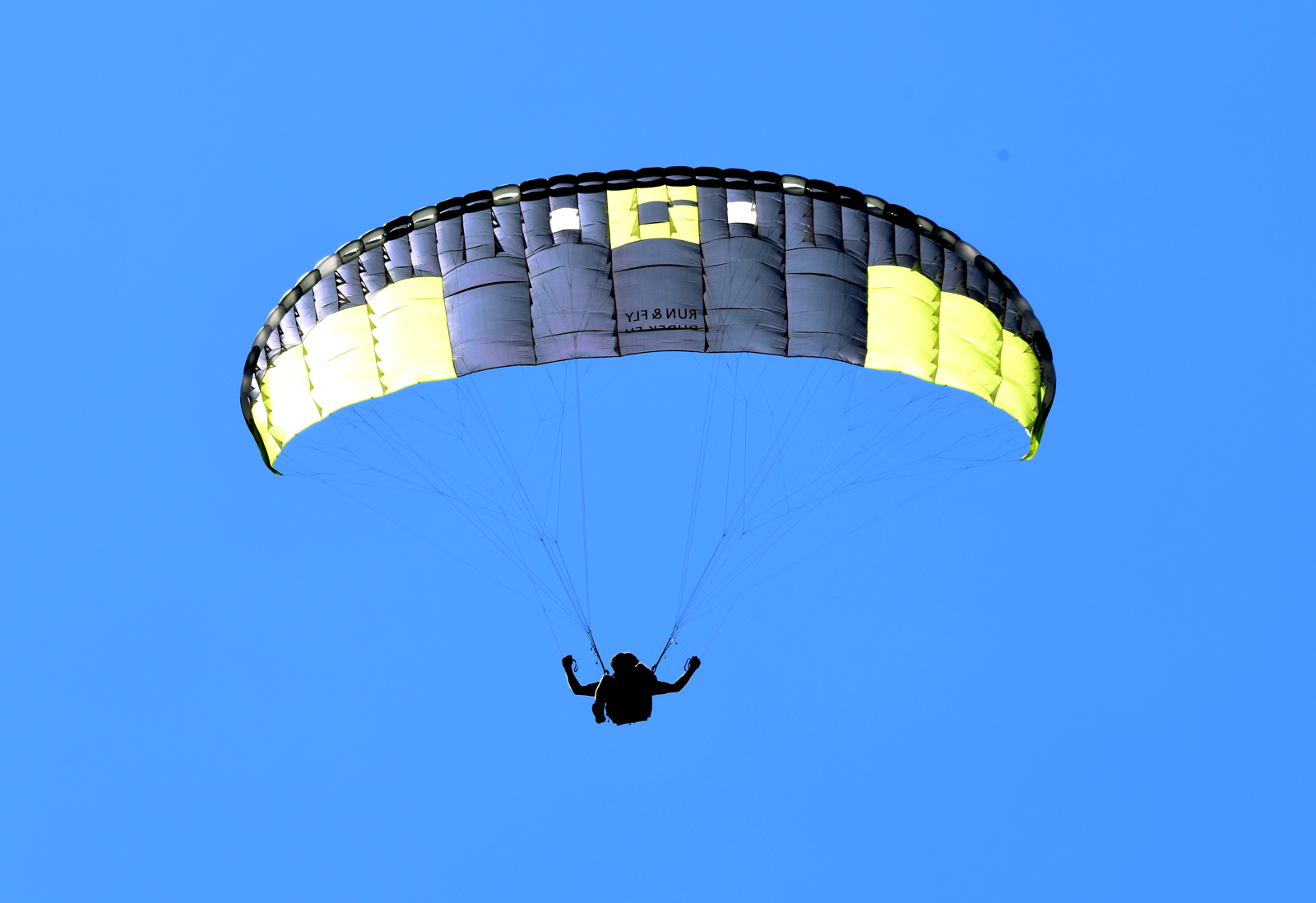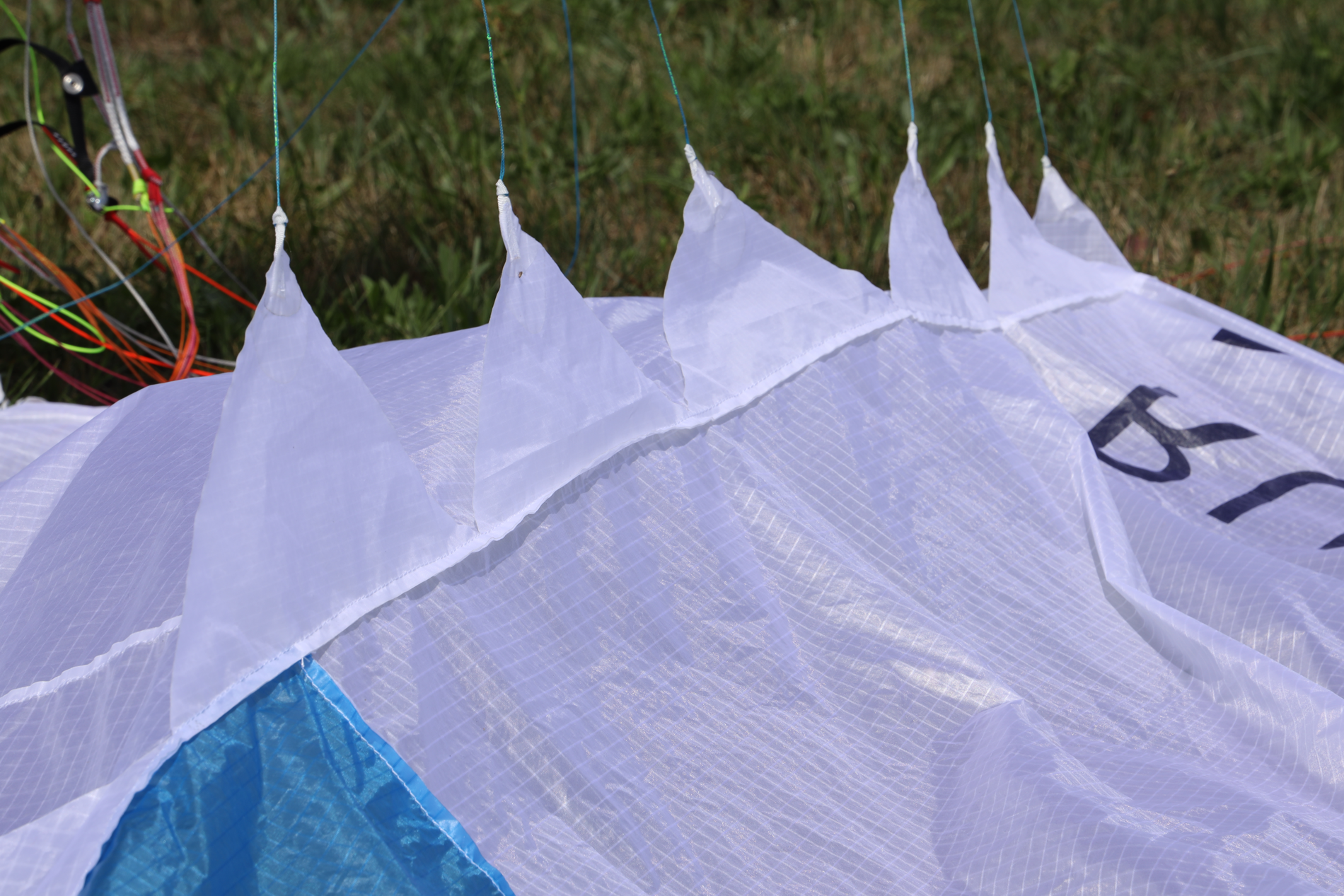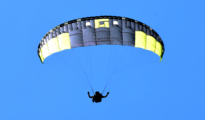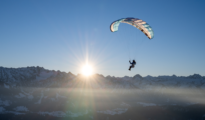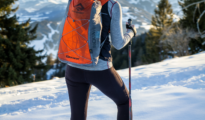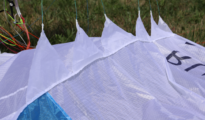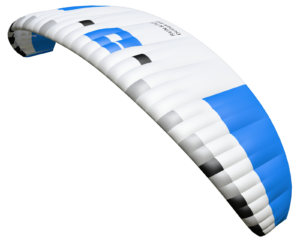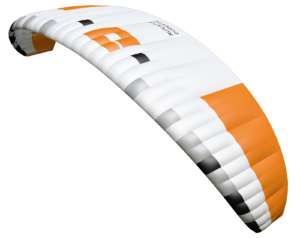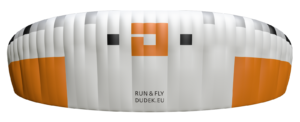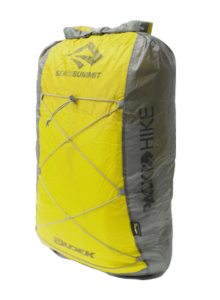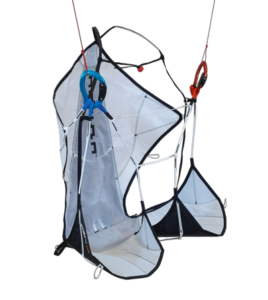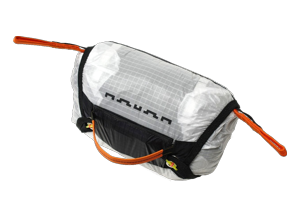Run&Fly 2
Run&Fly 2
The lightest and smallest paraglider in the world!
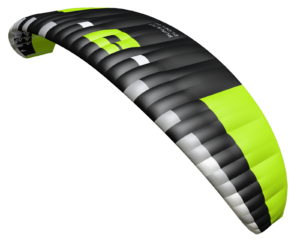
The new version of the lightest wing in the world!
Less than a kilo! Run & Fly 2 is still the lightest wing in the world *.
See what we managed to improve.
Bearing in mind that Run & Fly 2 does not always go to the hands of experienced pilots, we tried to simplify it even more.
Safe take-offs, auto-stabilization, great maneuverability with good glide and smooth landing. Everything you need to fly!
 See movie
See movie
It is record light, so you can carry it with you when you run or climb, hike and travel. Accordingly, it is so small that it fits in a 4 liter bag.
It will also work great as a second wing that you can always have at hand – you can easily fit it in your hand luggage while traveling by plane.
*in size 14
Take-off
- the wing fills up and goes over the head without the pilot’s participation,
- you don’t have to lift the A risers or watch the brakes; just walk ahead and the wing will rise over your head by itself,
- it is easy to control, responds well to brakes and forgives a lot
Flight
- direct control is extremely intuitive
- the wing moves minimally overhead, but never shoots forward, returns to its normal position all by itself, without unpleasant swings,
- remains safe and stable at all times, even without the participation of a pilot,
- exiting the spiral: without the pilot’s intervention, it quickly returns to the correct position, with a very small jump in front of the pilot.
Landing
Run & Fly 2 can land with a flat flare. It is important to give it as much speed as possible during the final approach. Be careful though – if the pilot brakes too hard, the flare will not work.
Better glide ratio and visual qualities
The new method of calculating the canopy stresses proposed by the originator of the project, JB Chandelier, helped to minimize the amount of distortions occurring in the area of the airfoil joints (3to1 technology). In this way, it was possible to slightly increase the glide ratio, as well as the visual qualities of the canopy.
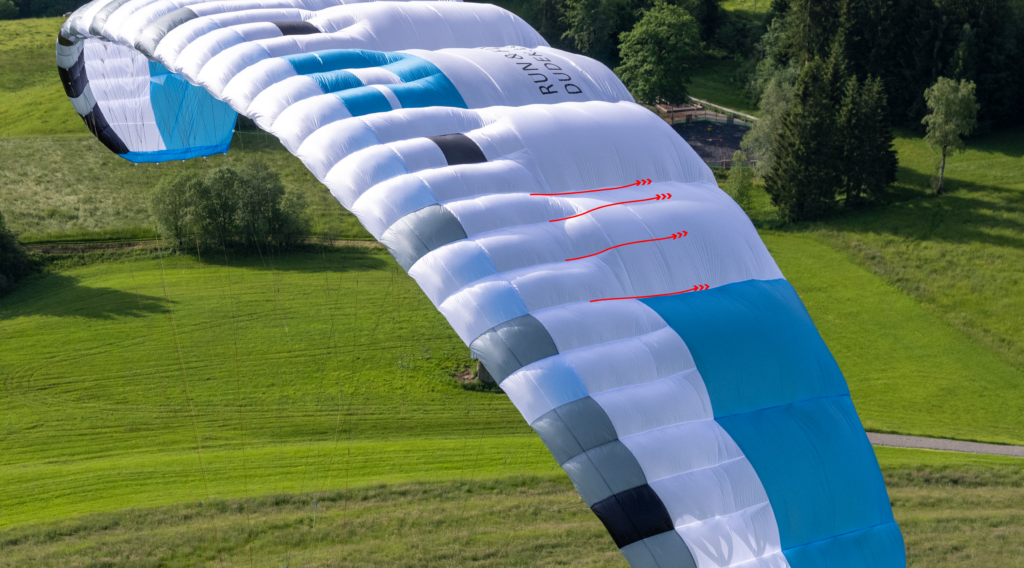
New Materials
The leading edge of Run & Fly 2 is made of double-impregnated Porcher Sport fabric, which is more durable. Similarly, the main ribs are now made of Hard Finish 32.
Also the lines are changed. The colors of the lines depend on the row and gallery level. This makes the ground handling easier. The colored lines are also better visible against the rocks, from which pilots of our single-shell aircraft often take off.
Simplified risers
The base are tapes made in the same, linkless technology using durable Dyneema lines. This time, however, the lines were hidden in special, multifunctional covers.
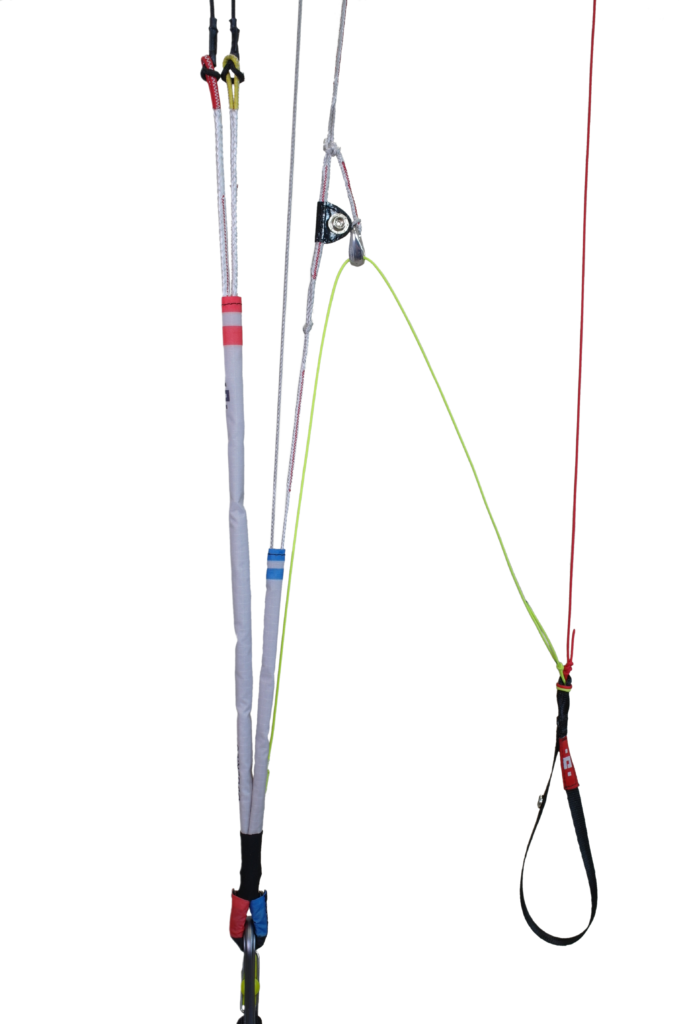
Thanks to these covers, the handling of the risers is significantly simplified by combining the lines into two separate groups. The lines are secured over large part of their length against external factors that can damage them, e.g. by contact with the hard part of the Velcro or tree branches.
The covers of the Run & Fly 2 risers have useful markings that help the pilot to properly attach to the paraglider, as well as during take-off. The A/B ands C/D risers are also distinguished by colors.
Risers personalization
Thanks to digital printing, the pilot may request personalization of his risers for an additional fee. Viewers watching films from the camera placed on the lap of the flying pilot will have no problem recognizing the author of the photos.
Convenient control handles and docking system with press studs
The handles in Run & Fly2 are made of light and soft tapes. The docking system is based on press studs, specially modified for the needs of the project. The handle is more convenient to control, and the snaps allow for a trouble-free and quick connection of the handle with the straps. The D-brake line, which connects the steering handle with the harness attachment point, is led outside the covers so that it can be used as an aid to properly grasp the controls. Running your fingers over the D-brake line up to the steering handle minimizes the risk of taking off with a twisted brake.
Possibility to install a trimmer
Due to the fact that the pilots to whom the Run & Fly is addressed may often not be familiar with the operation of a trimmer in paragliders, the paraglider will be sold without it as standard. The trimmer can be purchased separately and installed by replacing one line on the risers. If you order a wing and a trimmer at the same time, it can be installed in our factory prior to shipment.
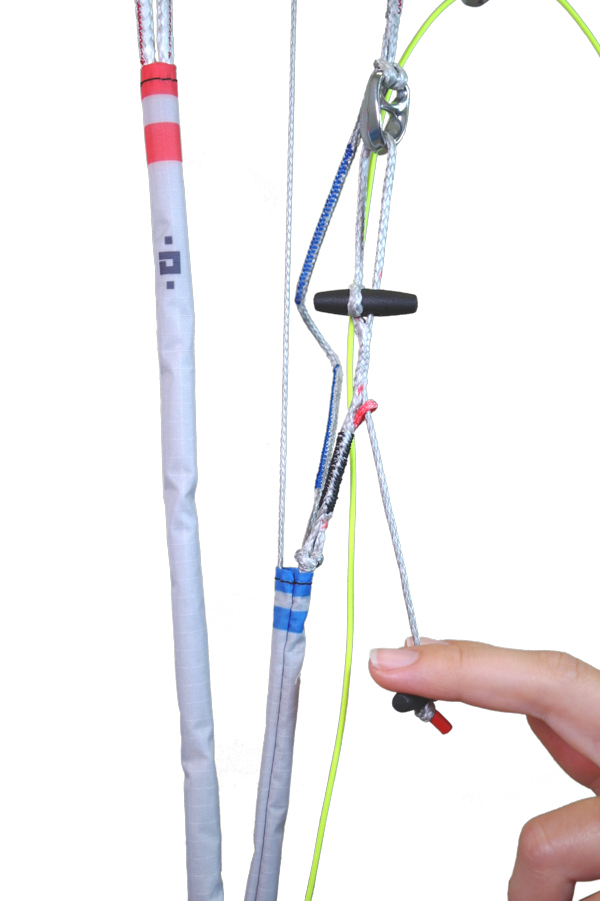
A lightweight trimmer extends the regular speed range by +/- 2 km/h, which may be beneficial depending on the wind conditions.
Characteristics of the trimmer operation:
- trimmer closed: take off in no wind or tailwind conditions
- half-open trimmer: neutral position (as in Run & Fly1)
- trimmer fully released: take-off in strong wind conditions; stable flight in turbulent air;
Releasing the trimmer also makes for better flare during landing.
Functional transport bag
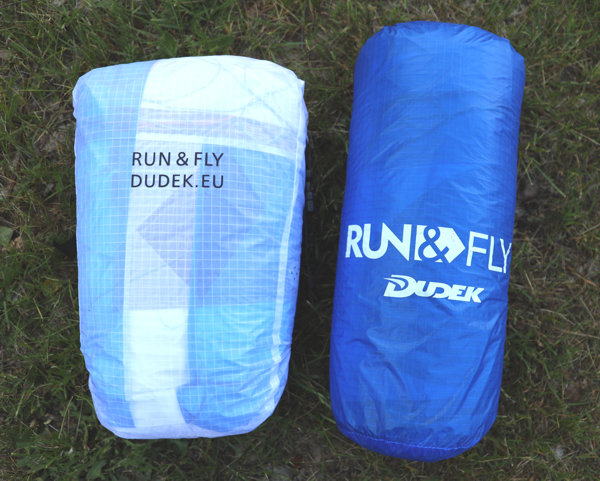
The special shape of the transport bag allows easy insertion of even a loosely folded wing, and the tapering walls will naturally compress the contents during packing. The closure is based on the well-known rolling system of the predecessor, with the difference that the plastic buckles are fastened on the sides of the bag. Thanks to this, the bag can be closed even when it is stuffed to the top with its contents. Rolling is facilitated by small holes on the sides that act as air vents. The size of the bag is selected so that it can accommodate both the wing and the Sit & Fly 260 harness, as most pilots never detach their harnesses from single-skin wings.
The bag will be available in two sizes: XS, designed for Run & Fly2 14 and 16, and S for 18 and 20.
Certification
As with our other special wings, we do not plan to fully certify Run & Fly 2 in flight. Although the wing is very safe, it is not a classic cross-country paraglider, but rather a fly-down wing. The design intent and single-skin construction make the results of classical EN / LTF tests most likely unreliable. However, a load test according to EN standards was performed, confirming the safety of use up to 105 kg of the take-off weight.
Used solutions
Parameters
Weight ranges
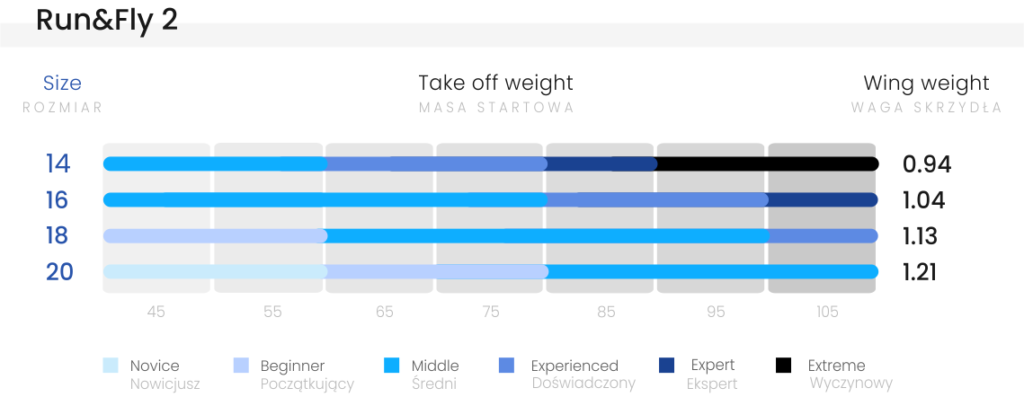 Technical data
Technical data
| Run&Fly 2 – size | 14 | 16 | 18 | 20 | |
| Load test EN: 926-1 | yes | yes | yes | yes | |
| Number of cells | 41 | 41 | 41 | 41 | |
| Area flat [m2] | 14,00 | 16,00 | 18,00 | 20,00 | |
| Area projected [m2] | 11,87 | 13,56 | 15,26 | 16,95 | |
| Span flat [m] | 8.19 | 8.76 | 9.29 | 9.78 | |
| Span projected [m] | 6,51 | 6.97 | 7,39 | 7,79 | |
| Aspect ratio flat | 4,80 | ||||
| Aspect ratio projected | 3,58 | ||||
| Speed | Min=35; trim=37 ; max= 39 +/-2 | ||||
| Weight | 0,94 | 1,04 | 1,13 | 1,20 | |
| Take-off weight (load) | 45-105 | 45-105 | 50-105 | 60-105 | |
| Cloth | Porcher: Classic 26 g/m2 ; Classic2 29 g/m2 Porcher: Hard 26 g/m2 ; Hard 32 g/m2 |
||||
| Lines | Edelrid 8001: 050; 070; 090, 130; 190 / Edelrid 7343-190 | ||||
| Risers | Liros D-Pro: 3mm; Cousin: Dyneema 16650 | ||||




